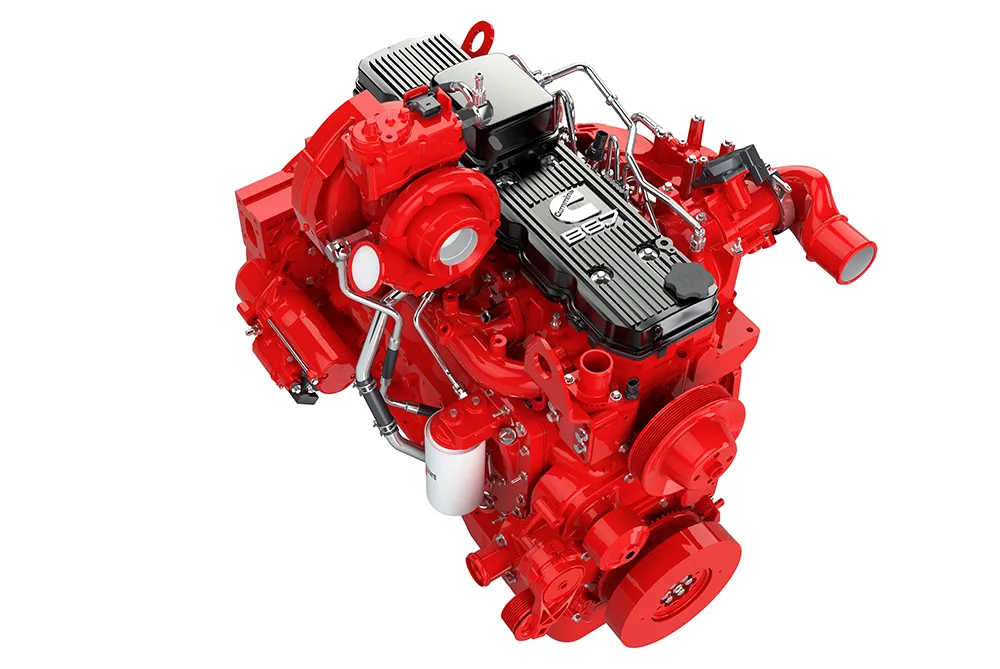Up to a third of fuel consumption in cars is is spent in overcoming friction. However, both fuel consumption and emissions can be reduced by the use of new technology. This news comes from a joint study by the VTT Technical Research Centre of Finland and the Argonne National Laboratory (ANL) in USA.
Innovative new technology can reduce friction by anything from 10-80% in various components of a car according to the study. And it should be possible to reduce car fuel consumption and emissions by 18% withi
April 19, 2012
Read time: 4 mins
Up to a third of fuel consumption in cars is is spent in overcoming friction. However, both fuel consumption and emissions can be reduced by the use of new technology. This news comes from a joint study by the 7108 VTT Technical Research Centre of Finland and the 5042 Argonne National Laboratory (ANL) in USA.
Innovative new technology can reduce friction by anything from 10-80% in various components of a car according to the study. And it should be possible to reduce car fuel consumption and emissions by 18% within the next 5-10 years and up to 61% within 15-25 years as a result. This development offers major fuel and cost savings globally.
There are 612 million cars in the world today. The average car clocks up about 13,000km/year, and in the meantime burns 340 litres of fuel just to overcome friction, costing the driver €510/year. Of the energy output of fuel in a car engine, 33% is spent in exhaust, 29% in cooling and 38% in mechanical energy, of which friction losses account for 33% and air resistance for 5%.
By comparison, an electric car has only half the friction loss of that of a car with a conventional internal combustion engine. The average annual friction loss in a car worldwide amounts to 11,860 MJoules. Of this, 35% is spent in overcoming rolling resistance in the wheels, 35% in the engine itself, 15% in the gearbox and 15% in braking.
With current technology, only 21.5% of the energy output of the fuel is used to actually move the car; the rest is wasted. The recent joint study by VTT and ANL shows that friction in cars can be reduced with new technologies such as new surface coatings, surface textures, lubricant additives, low-viscosity lubricants, ionic liquids and low-friction tyres inflated to pressures higher than normal.
Friction can be reduced by 10-50% using new surface technologies such as diamond-like carbon materials and nanocomposites. Laser texturing can be employed to etch a microtopography on the surface of the material to guide the lubricant flow and internal pressures so as to reduce friction by 25-50% and fuel consumption by 4%. Ionic liquids are made up of electrically charged molecules that repel one another, enabling a further 25-50% reduction in friction.
In 2009, a total of 208,000 million litres of fuel was burned in cars worldwide just to overcome friction; this amounts to 7.3 million TJoules of energy. Theoretically, introducing the best current technological solutions in all of the world’s cars could save €348,000 million/year; the best scientifically proven solutions known today could save €576,000 million/year, and the best solutions to emerge over the next 10 years could save €659,000 million/year.
Realistically, though, over a period of 5-10 years of enhanced action and product development measures could be expected to enable savings of 117,000 million litres in fuel consumption per year, representing an 18% reduction from the present level. Furthermore, in realistic terms, carbon dioxide emissions could be expected to decrease by 290 million tonnes per year and financial savings to amount to €174,000 million/year in the short term.
A driver can significantly influence the fuel consumption of a car. A reduction of 10% in driving speed, from 110 km/h to 100 km/h, translates into a 16% saving in fuel consumption. Slower speeds also allow for higher tyre pressures; an increase from 2-2.5 bar can translate into a 3% saving in fuel consumption.
VTT and ANL calculated friction loss in cars worldwide using a method that incorporated total crude oil consumption and fuel consumption of cars, the energy consumption of an average car, and the energy that an average car uses to overcome friction. Friction losses were accounted for in the subsystems of a car – tyres, engine, gearbox, brakes – and also in its components, such as gears, bearings, gaskets and pistons. The friction losses caused at friction points and lubrication points were also considered.
The study was conducted at the Metal Products and Mechanical Engineering strategic competence cluster in the DEMAPP programme, co-ordinated by FIMECC, where practical solutions for minimising friction loss are also being developed. The study was funded by the Finnish Funding Agency for Technology and Innovation (3969 Tekes), VTT and 5043 Fimecc, and the Argonne National Laboratory, 5044 Chicago Department of Energy. The recent research report on friction loss in cars and the potential for reducing energy consumption and carbon dioxide emissions was published in the Tribology International scientific journal
Innovative new technology can reduce friction by anything from 10-80% in various components of a car according to the study. And it should be possible to reduce car fuel consumption and emissions by 18% within the next 5-10 years and up to 61% within 15-25 years as a result. This development offers major fuel and cost savings globally.
There are 612 million cars in the world today. The average car clocks up about 13,000km/year, and in the meantime burns 340 litres of fuel just to overcome friction, costing the driver €510/year. Of the energy output of fuel in a car engine, 33% is spent in exhaust, 29% in cooling and 38% in mechanical energy, of which friction losses account for 33% and air resistance for 5%.
By comparison, an electric car has only half the friction loss of that of a car with a conventional internal combustion engine. The average annual friction loss in a car worldwide amounts to 11,860 MJoules. Of this, 35% is spent in overcoming rolling resistance in the wheels, 35% in the engine itself, 15% in the gearbox and 15% in braking.
With current technology, only 21.5% of the energy output of the fuel is used to actually move the car; the rest is wasted. The recent joint study by VTT and ANL shows that friction in cars can be reduced with new technologies such as new surface coatings, surface textures, lubricant additives, low-viscosity lubricants, ionic liquids and low-friction tyres inflated to pressures higher than normal.
Friction can be reduced by 10-50% using new surface technologies such as diamond-like carbon materials and nanocomposites. Laser texturing can be employed to etch a microtopography on the surface of the material to guide the lubricant flow and internal pressures so as to reduce friction by 25-50% and fuel consumption by 4%. Ionic liquids are made up of electrically charged molecules that repel one another, enabling a further 25-50% reduction in friction.
In 2009, a total of 208,000 million litres of fuel was burned in cars worldwide just to overcome friction; this amounts to 7.3 million TJoules of energy. Theoretically, introducing the best current technological solutions in all of the world’s cars could save €348,000 million/year; the best scientifically proven solutions known today could save €576,000 million/year, and the best solutions to emerge over the next 10 years could save €659,000 million/year.
Realistically, though, over a period of 5-10 years of enhanced action and product development measures could be expected to enable savings of 117,000 million litres in fuel consumption per year, representing an 18% reduction from the present level. Furthermore, in realistic terms, carbon dioxide emissions could be expected to decrease by 290 million tonnes per year and financial savings to amount to €174,000 million/year in the short term.
A driver can significantly influence the fuel consumption of a car. A reduction of 10% in driving speed, from 110 km/h to 100 km/h, translates into a 16% saving in fuel consumption. Slower speeds also allow for higher tyre pressures; an increase from 2-2.5 bar can translate into a 3% saving in fuel consumption.
VTT and ANL calculated friction loss in cars worldwide using a method that incorporated total crude oil consumption and fuel consumption of cars, the energy consumption of an average car, and the energy that an average car uses to overcome friction. Friction losses were accounted for in the subsystems of a car – tyres, engine, gearbox, brakes – and also in its components, such as gears, bearings, gaskets and pistons. The friction losses caused at friction points and lubrication points were also considered.
The study was conducted at the Metal Products and Mechanical Engineering strategic competence cluster in the DEMAPP programme, co-ordinated by FIMECC, where practical solutions for minimising friction loss are also being developed. The study was funded by the Finnish Funding Agency for Technology and Innovation (








